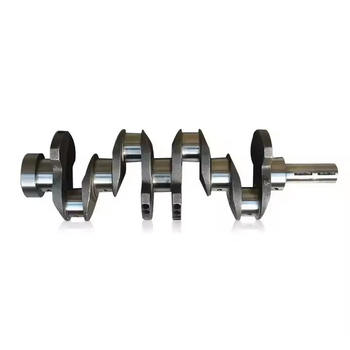Unlocking Engine Performance: Crankshaft Surface Treatments
You might have wondered, "What's the secret to unlocking the true potential of racing engines?" One often overlooked aspect is crankshaft surface treatments. These treatments can significantly improve engine performance, durability, and reliability. But what's the science behind these treatments, and how do they work? Let's dive in!
The Importance of Crankshafts in Racing Engines
Before we delve into surface treatments, let's first understand the role of crankshafts. In internal combustion engines, crankshafts convert linear piston motion into rotational motion, propelling the vehicle forward. The crankshaft's surface endures immense stress and friction, making it a critical component that can impact engine performance.
Nitriding: A Popular Surface Treatment
One commonly used surface treatment for crankshafts is nitriding. This process involves introducing nitrogen into the surface of the crankshaft, creating a hardened case that enhances wear resistance and fatigue strength. Nitriding also improves lubricity, reducing friction and heat generation.
The Benefits of Crankshaft Surface Treatments
So, what benefits can you expect from using surface treatments on crankshafts in racing applications?
Increased Durability
Surface treatments significantly increase the durability of crankshafts by reducing wear and tear. This extended lifespan is crucial in racing environments where engines are pushed to their limits.
Improved Engine Efficiency
By reducing friction and heat generation, surface treatments help improve engine efficiency. This means more power and better fuel economy, giving racers a competitive edge on the track.
Enhanced Reliability
With increased durability and efficiency, treated crankshafts offer enhanced reliability. Racers can have greater confidence in their engines, knowing they can withstand the rigors of high-performance racing.
Choosing the Right Surface Treatment
When selecting a surface treatment for your racing application, consider factors such as the specific engine demands, desired performance improvements, and budget constraints. Consulting with an experienced engine builder or surface treatment specialist can help ensure you make the best choice.
Practical Applications: Putting Theory into Practice
Here are a few actionable tips for implementing crankshaft surface treatments in your racing applications:
The Last Lap: Embracing Crankshaft Surface Treatments
To sum up, crankshaft surface treatments play a vital role in enhancing engine performance, durability, and reliability in racing applications. By understanding the science behind these treatments and making informed decisions, you can unlock your engine's true potential and leave the competition in the dust. So, what are you waiting for? It's time to explore the world of crankshaft surface treatments and give your racing engine the edge it deserves!




